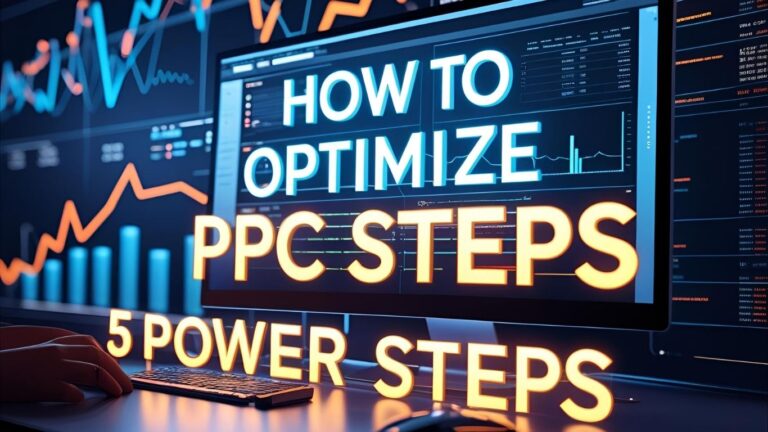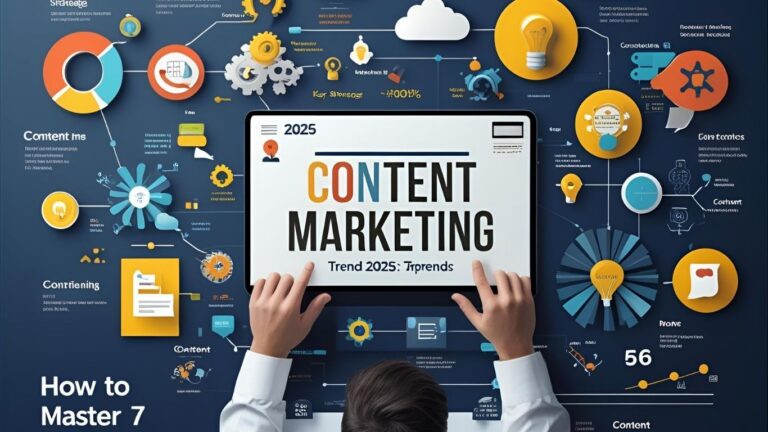Understanding User Intent for SEO: 5 Steps to Boost Rankings #UserIntent #SEO #BoostRankings
Understanding User Intent for SEO: The Key to Mastering Search Engine Rankings
In the ever-evolving world of SEO, one element stands tall above the rest—Understanding User Intent for SEO. If you’ve ever found yourself puzzled by why some of your content performs better than others, it likely comes down to how well you align with your audience’s true search intent. In this article, we will not only explore the concept of user intent but also dive deep into the steps that will enable you to refine your SEO strategy, increase your rankings, and ultimately engage your audience on a much deeper level.
By the end of this article, you’ll have a complete understanding of how user intent shapes your SEO efforts and how you can tailor your content accordingly. So, let’s get started and decode Understanding User Intent for SEO.
Why Understanding User Intent Matters for SEO
Imagine you’re searching for something online, and the first link you click doesn’t answer your question. It’s frustrating, right? That’s exactly what happens when search engines fail to interpret user intent correctly. Understanding user intent for SEO means knowing exactly what your audience wants when they perform a search and providing them with content that directly addresses their needs.
Search engines, like Google, are constantly refining their algorithms to better understand human behavior. They don’t just look at keywords—they analyze search patterns, user actions, and engagement to determine which results best match the intent behind a search. This shift means that the way we approach SEO has changed. Gone are the days when keyword stuffing and generic content would do the trick. Now, it’s about delivering quality, relevant answers to the specific questions users are asking.
What is User Intent?
Before diving into the strategies, it’s essential to understand what Understanding User Intent for SEO truly means. User intent refers to the reason behind a person’s search query. In simpler terms, it’s what the user hopes to achieve when they type something into a search engine. There are several types of user intent, and recognizing them will help you optimize your content accordingly.
Informational Intent: Users are looking for information. For example, “How to bake a cake.” Here, the user wants to learn something, and your content should provide a step-by-step guide or tutorial.
Navigational Intent: Users are trying to find a specific website or page. For example, “Facebook login page.” Your goal is to ensure that the right web page appears in the search results.
Transactional Intent: Users are ready to make a purchase or take an action. For example, “buy iPhone 12 online.” Your content should include clear calls to action and make the purchasing process as easy as possible.
Commercial Investigation Intent: Users are considering a purchase but need more information before deciding. For example, “best laptops under $1000.” Your content should compare options and highlight the best choices.
How Search Engines Interpret User Intent
When you search for something, Google doesn’t just look at the words you use. It looks at the context, the behavior of other users, and even the device you’re using. Google’s algorithms are sophisticated enough to analyze patterns and adapt to the varying search intents. By understanding these search patterns, Google is better able to provide results that match the user’s intent.
This is where Understanding User Intent for SEO comes into play. If you’re optimizing for transactional intent, for example, Google will likely prioritize your content if it includes product listings, clear CTAs, and price details. On the other hand, for informational queries, Google will favor well-researched articles that provide in-depth answers.
Google also uses RankBrain, a machine learning algorithm that helps refine search results based on user intent. It learns from previous searches, user interactions, and feedback to predict the most relevant content. This makes it more important than ever to ensure your content answers the user’s query in the most precise way possible.
Step 1: Analyzing Search Queries
The first step to Understanding User Intent for SEO is analyzing the search queries your target audience uses. The keyword you think people are searching for might not always match their true intent. For example, someone searching for “best running shoes” may have different needs than someone searching for “buy running shoes.”
How to Analyze Search Queries:
Use keyword research tools like Google Keyword Planner, Ahrefs, or SEMrush to uncover variations of your target keywords.
Look at the “People Also Ask” section on Google’s search results. This can give you insight into the questions people are asking around your primary keyword.
Check out the related searches section at the bottom of Google’s search results for more ideas.
By analyzing these queries, you’ll begin to see the nuances of your audience’s intent and can craft content that speaks directly to their needs.
Step 2: Crafting Content That Matches User Intent
Once you’ve analyzed the search queries, it’s time to craft content that answers them. Understanding User Intent for SEO means writing content that resonates with the user’s need and intent. If you’re targeting informational intent, your content should provide detailed, accurate information. If you’re targeting transactional intent, your content should focus on making the purchase process as seamless as possible.
Here’s how you can craft the right type of content based on intent:
For Informational Intent: Create comprehensive blog posts, how-to guides, tutorials, and case studies that provide value and answer the user’s question in detail.
For Transactional Intent: Offer product pages, reviews, and landing pages that highlight features, benefits, pricing, and clear calls to action (CTAs).
For Navigational Intent: Make sure your website structure is optimized, and your navigation is user-friendly. Ensure that users can easily find what they’re looking for.
Step 3: Optimizing Content for Featured Snippets
As part of Understanding User Intent for SEO, it’s essential to consider featured snippets. These are the boxes that appear at the top of some Google search results, and they are typically triggered by informational queries.
To optimize for featured snippets:
Answer questions directly in your content, ideally in the form of a list or table.
Use short, clear paragraphs to provide direct answers.
Focus on using headers (H2, H3) that mirror user queries.
Step 4: Understanding the User’s Journey
Users don’t always convert immediately after a search. Many will go through a process of learning, comparing, and considering before making a decision. This is where Understanding User Intent for SEO can really make a difference in your SEO strategy.
If you can map out the user journey and tailor your content to meet the needs at each stage, you can increase both conversions and user engagement.
Stages of the User Journey:
Awareness: The user is learning about a topic or problem.
Consideration: The user is evaluating different solutions.
Decision: The user is ready to take action.
By understanding the stage at which a user is in their journey, you can create content that matches their current needs, helping guide them further down the funnel.
Step 5: Tracking User Intent and Performance
The final step in Understanding User Intent for SEO is to track how well your content is meeting user needs. If your content is ranking well but users aren’t engaging with it or converting, it’s a sign that you may not be fully aligning with their intent.
Use tools like Google Analytics, Hotjar, and user feedback to track engagement, bounce rates, and conversion rates. This data will help you refine your content strategy and ensure that you are providing real value to your audience.
The Future of SEO and User Intent
As SEO continues to evolve, Understanding User Intent for SEO will only grow more critical. Google’s algorithms are becoming increasingly sophisticated, with a stronger focus on understanding the nuances of user behavior. With the rise of AI and voice search, the search landscape is changing fast.
It’s essential to stay ahead of the curve by continuing to monitor changes in user behavior and adjusting your content strategies accordingly. AI, machine learning, and evolving search patterns will continue to shape the way we optimize for user intent in the future.
Conclusion: Mastering User Intent for SEO
In the end, Understanding User Intent for SEO isn’t just about keywords or ranking; it’s about creating a meaningful connection with your audience. By analyzing search queries, crafting tailored content, and tracking performance, you’ll be well on your way to improving your SEO efforts and driving traffic that is not only high in volume but also highly engaged.
Are you ready to dive into the world of user intent? The journey to mastering SEO begins with truly understanding the needs and desires of your audience. By aligning your content to meet those needs, you’ll build a stronger, more effective SEO strategy.
Bullet-Point Summary
- User Intent for SEO is crucial for optimizing content and improving search engine rankings.
- Understanding the 4 types of user intent: informational, navigational, transactional, and commercial investigation.
- Search engines interpret user intent through algorithms like Google’s RankBrain and behavioral analysis.
- Step 1: Analyzing search queries to identify user intent through tools like Google Keyword Planner.
- Step 2: Crafting content tailored to user intent (informational, transactional, etc.).
- Step 3: Optimizing for featured snippets to answer user queries directly.
- Step 4: Understanding the user journey through awareness, consideration, and decision stages.
- Step 5: Tracking user intent through Google Analytics and other tools for continuous improvement.
- The future of SEO is focused on AI and machine learning, with user intent at the core of SEO strategies.
- Adapting SEO strategies based on evolving user behaviors and intent can lead to better engagement and conversions.
- High-quality, relevant content aligned with user intent leads to better search engine rankings.
- Using clear calls to action (CTAs) and seamless user navigation improves conversion rates for transactional intent.
- Always update and optimize content to ensure it remains relevant and addresses current user needs.
- SEO success lies in consistently understanding and meeting user expectations.
Unique FAQs with Answers
1. What is user intent in SEO?
User intent refers to the purpose behind a person’s search query. It’s what the user hopes to achieve when they perform a search on a search engine. Understanding this helps tailor content to meet specific needs, whether informational, transactional, or navigational.
2. Why does user intent matter for SEO?
User intent directly influences how well your content ranks on search engines. Content that aligns with user intent answers the query in the most relevant and engaging way, which boosts your chances of ranking higher.
3. How do I analyze user intent for SEO?
To analyze user intent, use keyword research tools like Google Keyword Planner, SEMrush, and Ahrefs. These tools help identify search volume, related keywords, and variations of a target query, giving insight into user needs.
4. How can I optimize content for transactional intent?
For transactional intent, create content that focuses on clear product descriptions, pricing, and a seamless buying process. Include clear CTAs and encourage conversions through customer reviews and product comparisons.
5. What are the four types of user intent?
The four types are:
Informational Intent – The user is seeking information.
Navigational Intent – The user wants to find a specific website.
Transactional Intent – The user intends to make a purchase.
Commercial Investigation Intent – The user is comparing options before making a decision.
6. How does Google interpret user intent?
Google uses its sophisticated algorithms, like RankBrain, to analyze the context and behavior behind search queries. It looks at user interactions, device type, and past searches to provide the most relevant results.
7. What is the role of featured snippets in SEO?
Featured snippets provide concise answers to user queries directly in the search results. Optimizing for featured snippets involves structuring content to provide direct answers, using lists or tables, and targeting question-based queries.
8. How does tracking user intent improve my SEO strategy?
Tracking user intent through tools like Google Analytics helps identify gaps in your content. By analyzing bounce rates, conversion rates, and engagement, you can refine your strategy and better align content with user needs.
9. How can I align my content with informational intent?
Create comprehensive, well-researched articles, how-to guides, and tutorials that directly answer common questions. Use clear headings, concise paragraphs, and include relevant, authoritative sources.
10. How does mobile optimization impact user intent for SEO?
Mobile optimization ensures that your content loads quickly and is easy to navigate on mobile devices. Since many users perform searches on their phones, a mobile-friendly site is essential for meeting user intent and improving SEO rankings.
11. How do I optimize content for Google’s RankBrain?
To optimize for RankBrain, focus on creating high-quality content that matches user queries in-depth. Use natural language, answer questions directly, and ensure that your content is engaging and relevant to the search intent.
12. What is the difference between transactional and commercial investigation intent?
Transactional intent is when users are ready to make a purchase, while commercial investigation intent involves users comparing products or services before making a decision. Both need clear, actionable content but with different focuses.
13. How does understanding user intent affect my conversion rates?
When your content aligns with user intent, it provides the answers users are looking for, making them more likely to engage with your content, stay on your page longer, and ultimately convert into customers.
14. What tools can help me track user intent?
Tools like Google Analytics, Hotjar, and SEMrush provide valuable insights into user behavior, such as bounce rates, time spent on page, and actions taken. These help you adjust your content to better meet user intent.
15. How often should I update content to align with user intent?
It’s important to regularly update content to ensure it remains relevant and aligned with changing search queries and user behavior. Monitor your content’s performance and adjust it to reflect the latest trends and needs.
Explore These Valuable Resources
To deepen your understanding of Understanding User Intent for SEO, we’ve curated a list of authoritative and insightful external resources. These links will help you explore further and stay ahead in the world of SEO:
Google Search Central Blog – Learn directly from Google’s official blog about search trends, algorithm updates, and SEO best practices. It’s an essential read for staying updated on how Google interprets search intent.
Moz Blog – Moz offers a treasure trove of articles on SEO strategy, keyword research, and understanding user intent. Their regular updates will help you stay sharp in a constantly changing SEO landscape.
Search Engine Journal – A must-visit for SEO professionals. SEJ offers actionable tips, case studies, and detailed analyses to enhance your SEO practices and better meet user intent.
Neil Patel’s Blog – One of the leading experts in SEO, Neil Patel offers comprehensive guides and tutorials on optimizing content for search engines and users alike. Check out his latest insights into SEO trends.
Ahrefs Blog – This resource is excellent for technical SEO, backlink strategies, and keyword research. Ahrefs dives deep into the mechanics of search engines, helping you better understand how to match user intent with SEO.
Backlinko Blog – Backlinko’s in-depth articles explore user intent, content creation, and how search engines rank pages. Brian Dean’s expert advice is highly valuable for anyone looking to enhance their SEO game.
HubSpot’s Marketing Blog – HubSpot offers a plethora of resources on inbound marketing, SEO, and how to align your content with user intent to increase conversions. Explore their insights for actionable strategies.
SEM Rush Academy – SEMrush provides free, comprehensive SEO courses that help you understand search intent and master content strategies, backed by their top-tier SEO tools.
Content Marketing Institute – CMI offers expert advice on creating content that aligns with both SEO and user intent, providing practical advice for long-term content success.
Yoast SEO Blog – Yoast is a leader in WordPress SEO plugins, and their blog regularly updates users on best practices for SEO, including optimizing content for user intent.
Search Engine Land – Stay informed with the latest news, insights, and strategies in the SEO world. Search Engine Land covers everything from algorithm updates to in-depth analyses of search intent.
Google Webmasters Guidelines – Official Google guidelines that help you understand how search engines assess the relevance of content, with a focus on user intent and SEO best practices.
SEO by the Sea – Bill Slawski’s blog covers SEO patents and in-depth technical SEO, offering valuable insights into how search engines interpret user intent.
Bing Webmaster Guidelines – If you’re optimizing for more than just Google, Bing’s guidelines provide a deep dive into how to enhance your website’s performance across multiple search engines.
Content Refined Blog – A great resource for learning how to optimize your content for both SEO and user intent with practical, hands-on advice.
By engaging with these resources, you will deepen your understanding of SEO and user intent. Each of these expert platforms offers fresh, actionable insights that are essential for staying ahead in the SEO game.
Blog Recommendation:
For more insightful content on SEO strategies, check out our blog. We share tips and deep dives to help you stay ahead in the fast-paced world of SEO.
Services:
Looking to enhance your SEO strategy and digital presence? Check out our comprehensive services designed to elevate your online marketing game.
Portfolio:
Take a look at our impressive portfolio to see how we’ve helped clients achieve digital success through SEO and creative solutions.
Shop:
Need SEO tools or resources? Visit our shop for products that will support your SEO journey and business growth.
LinkedIn:
Let’s connect! Visit my LinkedIn profile for more insights, articles, and updates on the latest in SEO and digital marketing.







